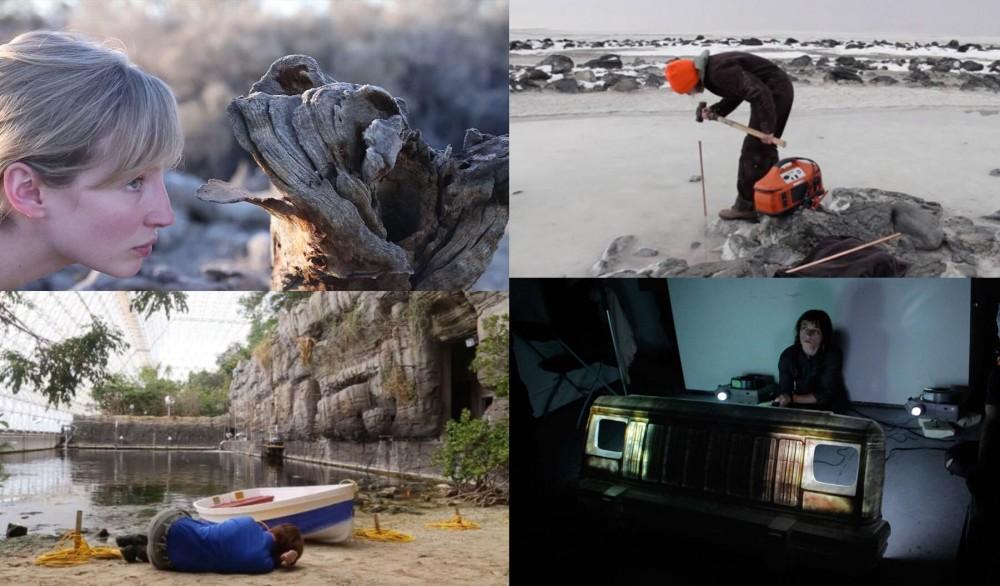GVSU professors present four-piece exhibit in Chicago

GVL / Courtesy – Aiden Simon
Nov 28, 2016
Meghan Moe Beitiks, a visual studies and foundations professor at Grand Valley State University, Marissa Benedict, a professor at the University of Oregon and Liz Ensz and Lindsey French professors at the School of the Art Institute of Chicago, presented four stations of performance art varying in complexities of sites, systems, ecologies, communication, matter and relevant social histories. Their work was put on display this past week at the Museum of Contemporary Art in Chicago.
The four artists presented their show “aper_ture: admitting the light” Tuesday, Nov. 22, from 6 p.m. to 7 p.m. at the MCA in Chicago. A van of 12 GVSU students and faculty traveled from Calder Art Center to Chicago to experience and support the artists and their work.
The exhibition took audience members through a myriad of assorted visual, audio and performance art pieces. Tour guides escorted audience members using flashlights from station to station, stopping at each piece for a 5 to10 minute live performance.
Programs were also distributed featuring written essays from each artist describing their event, experience and connections. The artists have been working with these ideas and projects since the late spring of last year.
The exhibition began with a short performance piece by Beitiks. She sat between two flat screen televisions, one displaying a graphic of her brainwaves and another displaying short, sporadic videos of animals and crowds breathing. Breathing along with the visual, Beitiks showed the exploration of frame and respiratory rate as well as brain waves and perceptions of light.
Following Beitiks’ work was French’s performance piece. She played an instructional audio piece that lasted eight minutes. French’s work was created with the intention to explore the act of photosynthesis and relating it to femininity, misogyny and economies.
Continuing through the exhibition, viewers listened to a brief monologue delivered by Ensz. The monologue took audience members on a road trip from the sunset through a period darkness and eventually ended by displaying the sky at dawn. Pre-recorded audio of voice and sound played from hand-made tire speakers while visuals were projected from the headlights of the grill of a Jeep onto a screen.
Benedict’s piece concluded the exhibition. She presented an eight-minute performance lecture with live audio and video projection. Benedict’s work was on flexible infrastructure, forms of assembly and modes of resistance, along with images of the emergency “shade ball” dropped on the Los Angeles reservoir in 2014.
Alejandro Acierto conducted technology support and facilitation for Benedict’s piece.
“Some of us have worked together as a group for several years, so the show is significant in that sense,” Beitiks said. “I hope for the audience to get a glimpse of our individual practices and use those as a means to reflect on the various things we are examining.”
After completing the “aper_ture” series, Beitiks is going to continue to work on a project titled “Systems of Pain/Networks of Resilience,” which is a series of video, installation and performance works examining parallels in human and non-human processes of resilience and recovery from trauma.

























